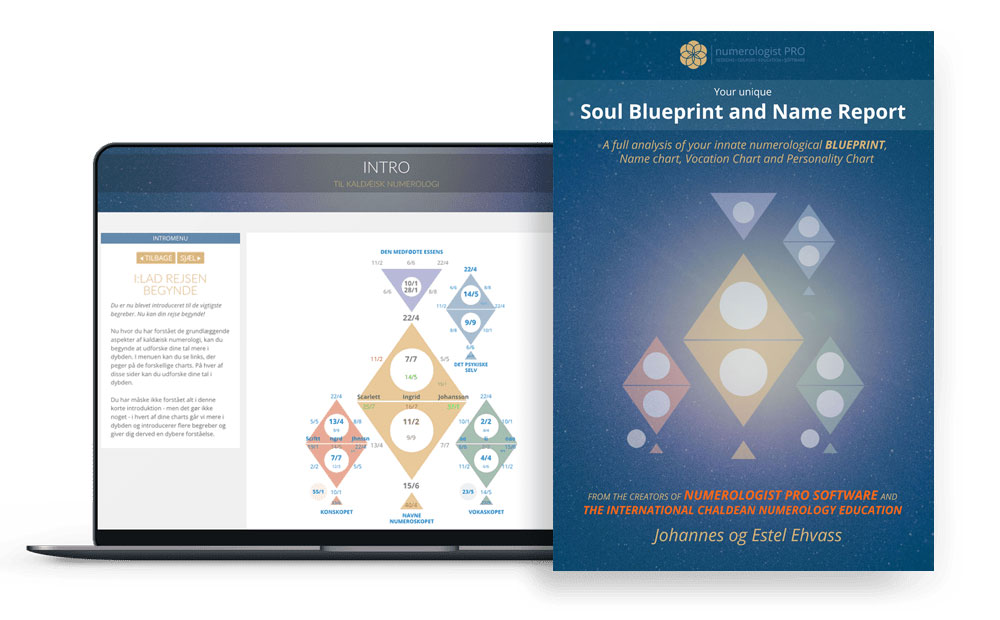Arabic Astrology: Pioneering Contributions and Lasting Legacy

Johannes Ehvass
Welcome, dear reader! Together, we embark on a captivating journey into astrology, a timeless art and science that has accompanied humanity since its earliest days. Each astrological discovery not only mirrors the era and culture it emerged from but also feels like a celestial gift, as if the universe is directly speaking to us. Through these articles, I share with you the profound journey of how astrology has grown and evolved alongside us. Let's explore this cosmic connection that has, for millennia, enriched our understanding of ourselves and the universe around us.
Introduction

Arabic astrologers, situated at the crossroads of diverse intellectual traditions, made profound contributions to the field of astrology that still resonate today. As custodians and synthesizers of Greek, Persian, and Indian astrological wisdom, they didn’t just preserve existing knowledge but made seminal advancements, enriching the tapestry of global astrological understanding.
Arabic Parts (Lots)
Concept and Calculation
One of the most unique and enduring contributions from Arabic astrology is the concept of “Arabic Parts” or “Lots”. These are specific mathematical points calculated using the positions of planets or angles in a natal chart. By combining the degrees of two significant points and subtracting a third, an “Arabic Part” is derived, which is then interpreted for additional insights.
Significance of Arabic Parts
Each Arabic Part provides nuanced information about a specific area of life. The most famous among them is the Part of Fortune, indicating potential prosperity and well-being. But there are hundreds of Arabic Parts, addressing everything from love and marriage to career and illness. They offer a granular, detailed layer of interpretation to astrological readings.
The Revival of Time-Lord Techniques
While Hellenistic astrologers employed various “time-lord” techniques to determine periods of activation in a person’s life, many of these methods faded in the West. However, Arabic astrologers preserved and refined them. Techniques such as “Firdaria” and “Profections” became standard in Arabic practices, determining the governing planets for specific life periods, and they have experienced a resurgence in modern traditional astrology.
Introduction of Mansion-Based Astrology
Influenced by Indian and Chinese traditions, Arabic astrologers further developed the concept of lunar mansions or “manazil.” These are segments of the ecliptic through which the moon passes, and each mansion is associated with particular qualities and interpretations. This mansion-based astrology influenced both electional practices (choosing auspicious times) and talismanic magic.
The Astrolabe: Bridging Sky and Science
While the astrolabe’s invention predates the Islamic Golden Age, Arabic scientists and astrologers refined and spread its use. This intricate astronomical instrument allowed for precise time-keeping and star-mapping, becoming indispensable for astrological calculations. The astrolabe also facilitated the spread of Arabic star lore to Europe, as many star names in use today, like Aldebaran and Vega, have Arabic origins.
Texts and Terminology
The vast translation movement and subsequent commentaries produced a wealth of astrological texts in Arabic. Many of these works would later be translated into Latin and inform European Renaissance astrology. Alongside, the Arabic language left an indelible mark on astrological terminology. Words like “zenith”, “azimuth”, and “alchemy” trace their etymological roots to Arabic.
Modern Relevance of Arabic Astrological Practices
Modern Western astrology, especially in its traditional revival, owes much to Arabic contributions. Arabic Parts continue to offer depth in natal chart interpretations. Time-lord techniques, once relegated to obscurity, are being rediscovered and practiced. The star lore and terminology, preserved and propagated by Arabic scholars, are now integral to astrological parlance.
The “Why” Behind the Compatibility
While modern astrologers might compare planetary placements to determine compatibility, Arabic astrologers had a different approach. They extensively used “dignities” and “debilities” of planets, assessing which planet was in a sign where it functioned well (domicile, exaltation) or poorly (detriment, fall). This complex system added layers to compatibility analysis, examining not just where planets are but how they function.
Conclusion
Arabic astrology stands as a testament to the rich synthesis of diverse astrological traditions. The scholars of the Islamic Golden Age, through preservation, innovation, and dissemination, left an enduring legacy. Their pioneering techniques, tools, and texts remain relevant, ensuring that Arabic astrology’s golden contributions continue to shine in the global astrological landscape.
Arabic Star Names
Arabic star names are a significant legacy in modern astronomy, many of which have been passed down from the works of Arabic astronomers during the Islamic Golden Age. However, astrological significance is a bit trickier to track comprehensively because, while the Arabs were instrumental in recording and naming stars, much of the astrological significance attributed to individual stars comes from a broader ancient and medieval tradition, not exclusively Arabic.
Here is a list of some well-known stars with Arabic names, along with general astrological associations where available:
- Aldebaran (Alpha Tauri):
- Astrologically, Aldebaran is considered one of the four “royal stars” of Persia, associated with integrity and honor, but also potential for violence.
- Altair (Alpha Aquilae):
- In astrology, Altair is associated with boldness and ambition, often linked to military prowess and courage.
- Antares (Alpha Scorpii):
- Another of the “royal stars,” Antares is often associated with the warrior archetype in astrology, linked to Mars and Jupiter, and can signify success that can lead to downfall if not managed well.
- Betelgeuse (Alpha Orionis):
- In astrology, Betelgeuse is often associated with great fortune, fame, and wealth, but also potential upheaval.
- Deneb (Alpha Cygni):
- This star is seen as one of the markers of the Summer Triangle and is associated with high status, influence, and spiritual insight.
- Fomalhaut (Alpha Piscis Austrini):
- Also one of the “royal stars,” Fomalhaut is linked to magic, fame, and wealth, but with potential for a tragic end.
- Rigel (Beta Orionis):
- Astrologically, Rigel is said to bring knowledge, wealth, and fame, but can also suggest imprudence.
- Vega (Alpha Lyrae):
- Vega’s astrological associations include charisma and influence, often associated with the arts and creativity.
- Sirius (Alpha Canis Majoris):
- In astrology, Sirius is often seen as a star of success and honor but can also bring the heat of passion and potential for conflict.
- Alpheratz (Alpha Andromedae):
- Astrologically, this star is linked to independence, freedom, and movement, often associated with a love of knowledge.
- Algenib (Gamma Pegasi):
- In astrology, it is often associated with the courage and adventurous spirit of the pioneer.
- Algol (Beta Persei):
- Traditionally known as the “Demon Star,” Algol has a strong astrological association with intensity and potential violence, given its variable brightness.
- Alhena (Gamma Geminorum):
- Alhena is believed to bestow artistic skills and honors in astrology.
- Alnair (Alpha Gruis):
- Astrologically, this star is not as well documented in Western astrology.
- Alnilam (Epsilon Orionis):
- As part of Orion’s Belt, Alnilam shares similar astrological qualities to the constellation of Orion, generally associated with boldness and a daring nature.
- Alphard (Alpha Hydrae):
- In astrology, Alphard offers individualism and sometimes a sense of being an outsider, associated with breaking norms.
- Altarf (Beta Cancri):
- Its astrological significance is not as prominent in Western traditions.
- Dubhe (Alpha Ursae Majoris):
- Dubhe is said to give the ability to evaluate situations in a balanced way and often indicates leadership.
- Mirfak (Alpha Persei):
- In astrology, Mirfak is associated with assertiveness and proactiveness.
- Regulus (Alpha Leonis):
- Another of the “royal stars,” Regulus is associated with leadership, honor, and wealth, but with the risk of downfall due to pride.
Please note that astrological interpretations can vary widely, and the significance of each star has evolved over time and among different cultures. The associations given here are a blend of traditional Western astrology and some of the lore that may have been present in the Arabic astronomical tradition. Many of these stars were noted and named for their brightness and position, and their astrological meanings were often derived later, influenced by the works of various astrological traditions across cultures.

Johannes & Estel: Renowned authorities in Numerology, Astrology, and the esoteric arts. As the founders of Scandinavia's premier Numerology school, we're delighted to share our insights through this curated series on astrology. Dive in and discover the stars.
The Worlds Most Advanced Numerology Report

Your birthdate reveals your unique life purpose, potentials, talents, weaknesses, and karma in this life.
Your names show what you attract into your life regarding your career, relationships, happiness, money, and success.
GET THE REPORT HERE
Introduction to Astrology
The history of Astrology
Moving beyond deterministic astrology
Foundation of Astrology: Planets, Signs and Houses
Astrology and the Holographic Universe
The Holographic Universe
The Human Psyche as a Mirror to The Solar System
The Human Body as a Mirror to The Star Signs
Astrology Background
Egyptian Astrology
Mayan Astrology
Chinese Astrology
Indian Astrology - Jyotish
Celtic Astrology
Tibetan Astrology
Mesopotamian Astrology
Early Mesopotamian Astrology: The Dawn of Celestial Divination
Enuma Anu Enlil: The Epicenter of Babylonian Celestial Omen Interpretation
Babylonian and Chaldean Astrology
Babylonian and Chaldean Astrology
Chaldean influence and evolution
Chaldean Wisdom: Safeguarding and Transmitting Astrological Knowledge
Hellenistic Astrology
Hellenistic Astrology background
Claudius Ptolemy and Tetrabiblos
Vettius Valens
Dorotheus of Sidon
Persian Astrology
Persian Astrology background
Sassanian Astrology
Late Antiquity and The Transition Period
Late Antiquity and The Transition Period
Hellenistic to Islamic Transition: The Torchbearers of Astrological Wisdom
Islamic Golden Age
Arabian Astrology Background
Arabian Astrology Contributions
Medieval Astrology
Introduction: The Medieval Cosmos
Monastic Preservers: Astrological Knowledge in the Dark Ages
Astrology in Medieval Medicine
Kings, Queens, and Constellations: Astrology in the Medieval Court
The Church and the Stars: A Contentious Relationship
Universities and Scholastic Pursuits: Academic Astrology
Astronomy & Astrology: Tools of the Trade
Medieval Astrological Houses and the Synthesis of Traditions
Transition to the Renaissance: Humanism and the Celestial Arts
Reflections: Medieval Astrology's Echoes in Modern Practice
Astrological Art of the Middle Ages
Famous Medieval Astrologers
Medieval Astrological Texts
Renaissance Astrology
Renaissance Humanism and Astrology
Scientific Advancements and Astrology
The Social Fabric: Astrology in Everyday Renaissance Life
Court Astrologers of the Renaissance
Controversies and Conflicts: Astrology Under Scrutiny
Renaissance Texts and Authors: Continuation of a Tradition
Astrology and Art: Celestial Imagery in the Renaissance
Renaissance Astrological Practices: Evolutions and Innovations
End of the Renaissance: The Gradual Decline of Astrological Influence
Renaissance Astrology's Echo in the Modern World
Enlightenment Astrology
Introduction: The Enlightenment and Astrology
Challenging the Stars: Astrology's Critics during the Enlightenment
Astrology and the New World
Astrology in the 19th Century
The Dawn of Psychological Astrology
Astrology in the 20th Century: A Modern Renaissance
Astrological Associations and Schools
Modern Controversies and Astrology
Astrology and Popular Culture
Astrology and Technology
Current Trends and Future Directions in Astrology
Conclusion: Reflecting on Astrology's Evolution
The Planet Significances
The Sun in Astrology
The Moon in Astrology
Mercury in Astrology
Venus in Astrology
Mars in Astrology
Jupiter in Astrology
Saturn in Astrology
Uranus in Astrology
Neptune in Astrology
Pluto in Astrology
Chiron in Astrology
Black Moon Lilith in Astrology
Pars Fortuna in Astrology
Ceres in Astrology
Houses in Astrology
Introduction to Astrological Houses
The Angular Houses
The Succedent Houses
The Cadent Houses
The 1st House
The 2nd House
The 3rd House
The 4th House
The 5th House
The 6th House
The 7th House
The 8th House
The 9th House
The 10th House
The 11th House
The 12th House
Interaction Between Houses
Derived Houses, House Rulers, and Interceptions
Conclusion: Synthesizing House Knowledge
All Materials © 2023 & 2024 Numerologist PRO
Terms of Service: Information provided by Numerologist PRO and/or from this web site is not intended as advice (medical, psychological, financial or other), nor is it intended to replace your work with a qualified professional (medical or otherwise). You should maintain your relationship with your providers and consider the services of this site as informational only. Any information, stories, examples, or testimonials presented on this website do not constitute a warranty, guarantee, or prediction regarding the outcome of an individual. This web site is a sharing of knowledge and information of numerology/energy work based on the experiences of Numerologist PRO. You are encouraged to make your own decisions based on your own research and inner guidance. By booking and receiving services, you agree to fully release and hold harmless Numerologist PRO and all it's affiliated numerologists from and against any liability or claim that may arise out of or in connection with their service(s).
Numerologist PRO © 2021

CONTACT
numerologist@numerologistpro.com
LIKE US, and get free numerology tools, info about your personal numbers, best business dates of the year - and more!
YOUR FREE NUMEROSCOPE CHART
Enter your name and email below and get access to our free online numerology chart tool.